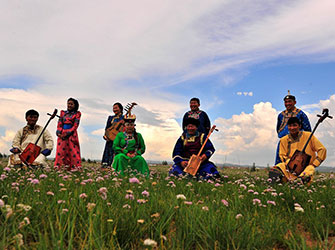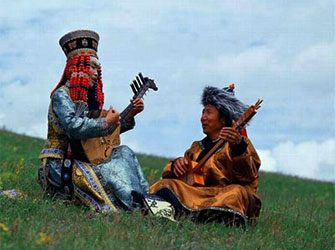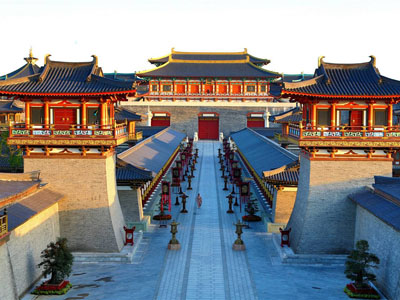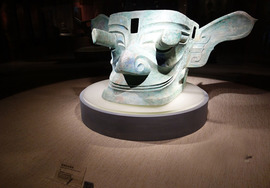The Pastoral Song of the Mongolian Ethnic Group
 Masterpiece of the Oral and Intangible Heritage of Humanity
Masterpiece of the Oral and Intangible Heritage of Humanity
The pastoral songs of the Mongolian ethnic group are also named Changdiao (long-drawn-out songs) in Chinese, which are practiced by the Mongolian Ethnic Group in North China and Mongolia. They are common on the grasslands of Alxa, Xilin Gol, and Hulun Buir.
In November of 2001, the pastoral songs were proclaimed by UNESCO (the United Nations Educational, Cultural and Scientific Organization) as a masterpiece of the Oral and Intangible Heritage of humanity (a list that ensures that the best of every country's traditions is preserved and developed as well as made known to the outside world). It is the first time that China joins hands with other countries to have applied for entry into the list.
Description
The pastoral songs of the Mongolian minority constitute one of the two major forms of Mongolian songs, the other being Duandiao, which means "short-drawn-out songs." Changdiao is believed to date back 2,000 years and have traditional customs and expressions. It is recorded that China and Mongolia have shared pastoral songs ever since the origin of the Mongolian ethnic group.
The songs are characterized by their lengthy vocalization and free rhythm, and are generally divided into two lead sentences and two follow-up sentences. The overwhelming majority of the Changdiao themes consist of horses, camels, herds of sheep, blue sky, white clouds, and water and grass. They are mostly performed by means of the performers' natural voice, and a type of glossy intonation is used to produce a long-drawn-out effect and give the songs a richer sense of the flavor and vigor of the grasslands.
Cultural Values
As a grand ritual form of expression associated with important celebrations and festivities, the Mongolian minority's pastoral songs play a distinct and honored role within Mongolian society.
It is performed at weddings, the inauguration of a new home, the birth of a child, and the branding of foals, or other social and religious festivals celebrated by Mongolia's nomadic communities. The Changdiao can also be heard at a festival celebrating sports competitions in wrestling, archery, and horse-racing.
 A typical pastoral song is a lyrical chant made of 32 verses with a highly ornamented melody praising the beauty of the steep mountains and rivers, or the love for parents or close friends, expressing reflections on human destiny.
A typical pastoral song is a lyrical chant made of 32 verses with a highly ornamented melody praising the beauty of the steep mountains and rivers, or the love for parents or close friends, expressing reflections on human destiny.
It is characterized by an abundance of ornamentation, falsetto (artificially high notes), a long and continuously flowing melody with rich rhythmical variation, an extremely wide vocal range, and a free compositional form. The rising melody is slow and steady while the falling melody is often intercepted with a lively triple continuant (a type of method to prolong sounds), imitating the pace of life in the grasslands.
Performances and compositions of the Mongolian minority's pastoral songs are closely linked to the nomadic pastoral way of life, which is still widely practiced in Mongolia.
Risk of Disappearance
The repertoire of the pastoral songs is gradually decreasing, while the remaining songs are becoming increasingly standardized.
Parts of the grasslands where tradition-bearers used to live as nomads have fallen victim to desertification. As a result, it has caused many families to shift to a sedentary way of life where many classical themes of the Changdiao, such as the praise of typical nomads' virtues and experiences, lose their relevance.
Action plan
The two sides of China and Mongolia will jointly carry out research on protection of the pastoral songs, which is of great significance to passing on the declining cultural heritage.
Related Tours

 Masterpiece of the Oral and Intangible Heritage of Humanity
Masterpiece of the Oral and Intangible Heritage of Humanity A typical pastoral song is a lyrical chant made of 32 verses with a highly ornamented melody praising the beauty of the steep mountains and rivers, or the love for parents or close friends, expressing reflections on human destiny.
A typical pastoral song is a lyrical chant made of 32 verses with a highly ornamented melody praising the beauty of the steep mountains and rivers, or the love for parents or close friends, expressing reflections on human destiny.





